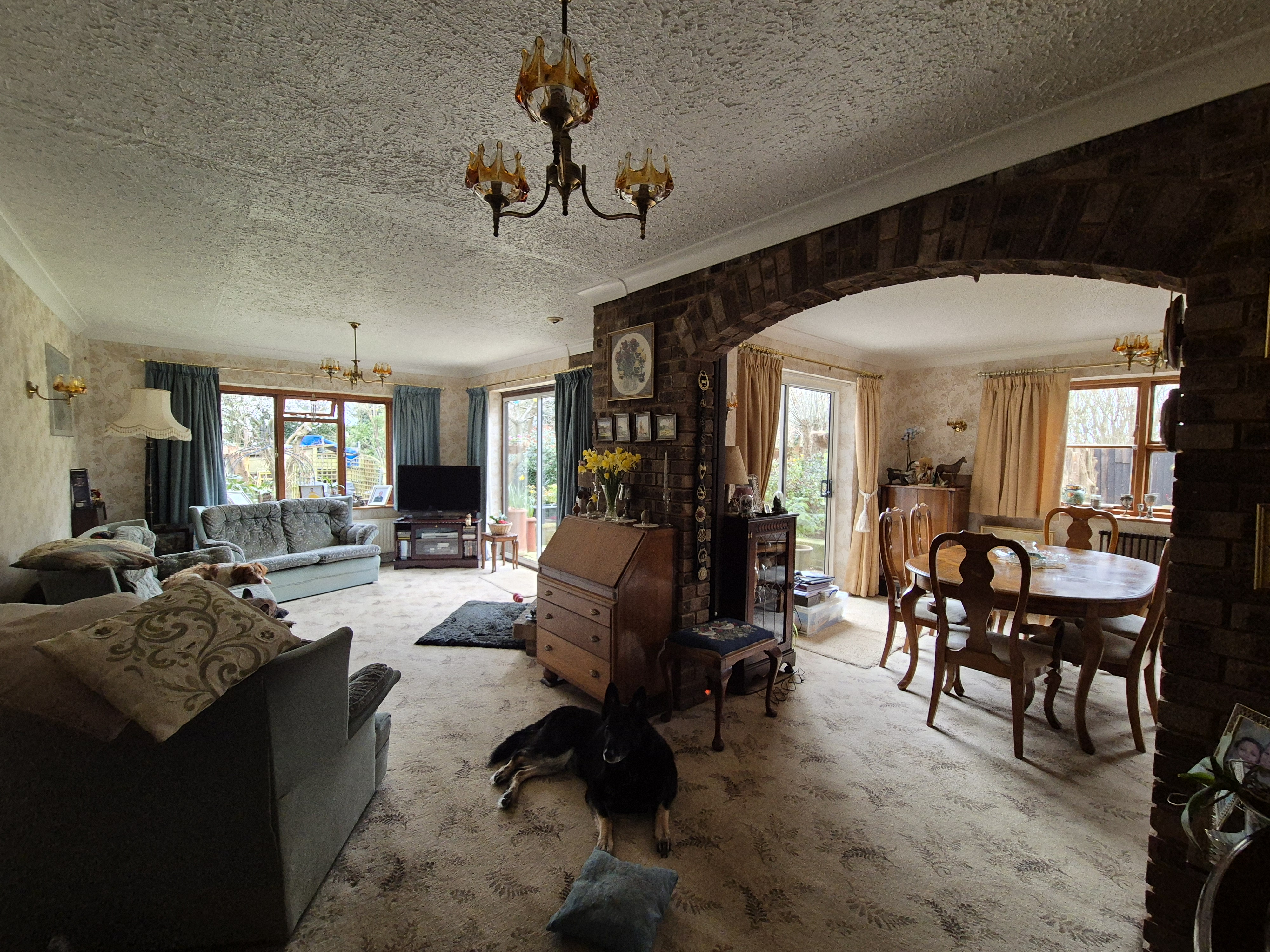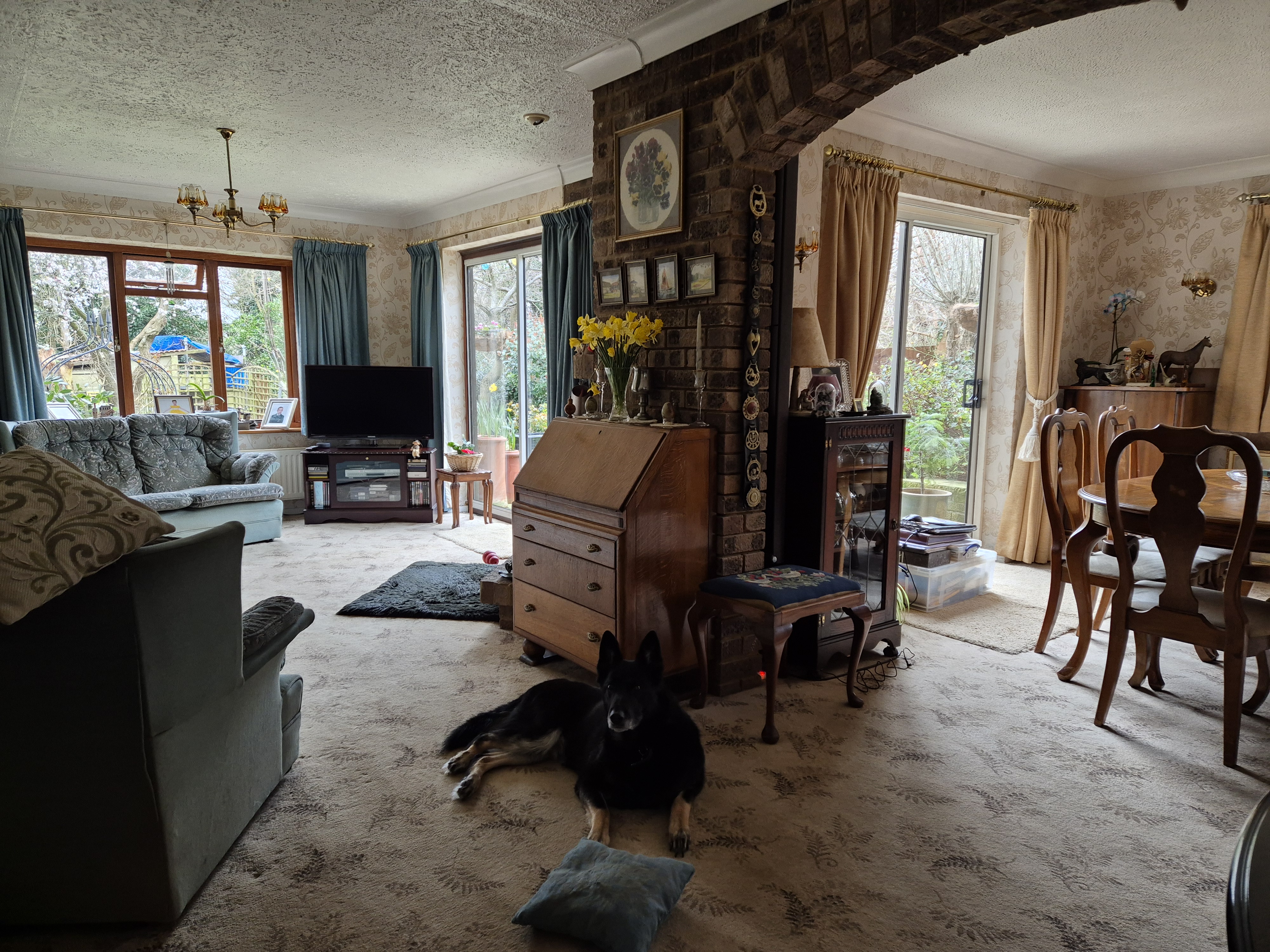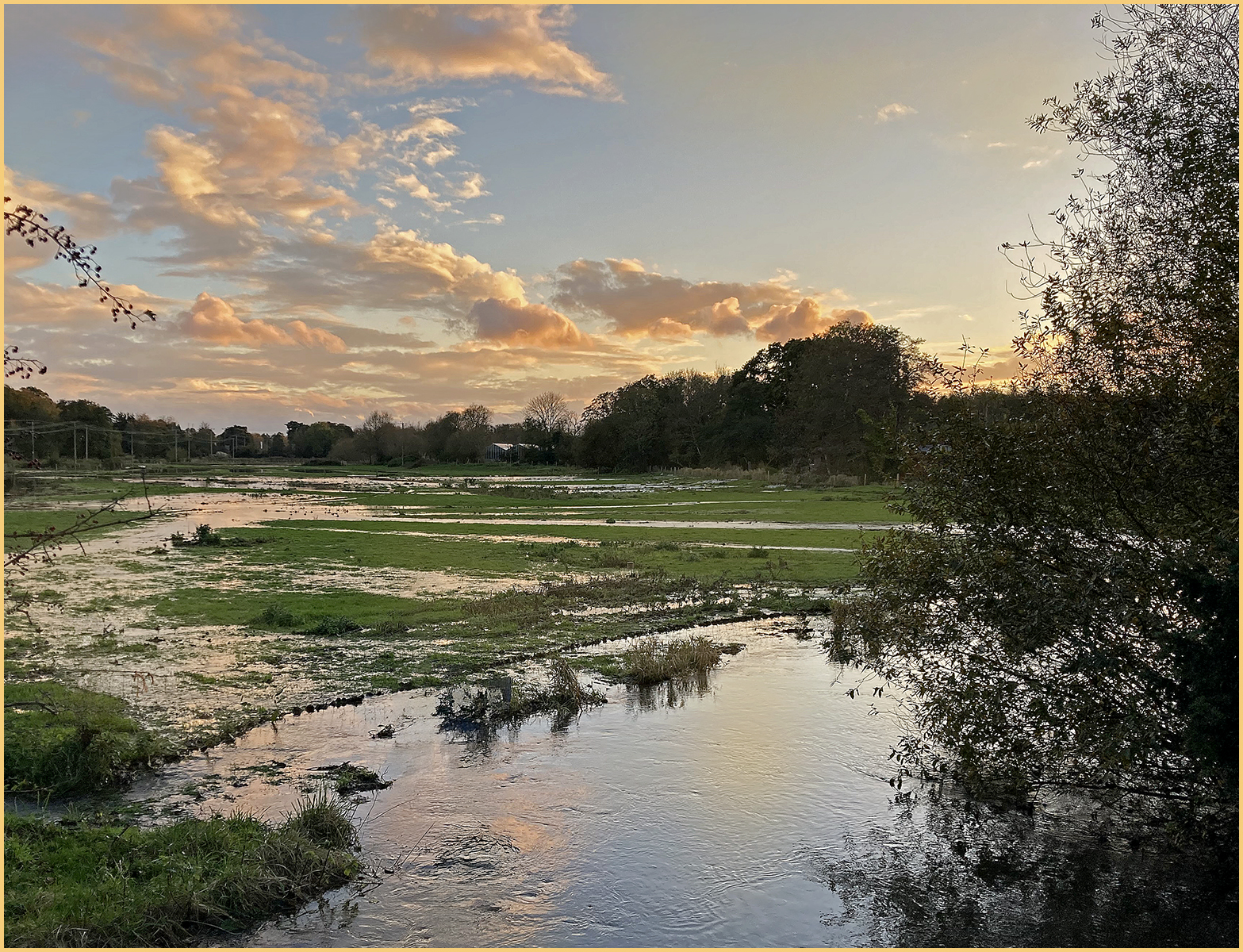 |
 |
| This site requires new users to accept that a small amount of member data is captured and held in an attempt to reduce spammers and to manage users. This site also uses cookies to ensure ease of use. In order to comply with new DPR regulations you are required to agree/disagree with this process. If you do not agree then please email the Admins using info@nikondslr.uk after requesting a new account. Thank you. |
| Moderated by: chrisbet, | ||
| Author | Post | |||||||||
|---|---|---|---|---|---|---|---|---|---|---|
chrisbet
|
Just got a new Samsung phone - camera has 50mp and AI built in - just playing with it at the moment but this looks like another nail in the SLR coffin - 4k video too!  Click here to comment on this image. Normal -  Click here to comment on this image. |
|||||||||
Iain
|
That looks nice on the screen but what is it like if you print it out. My son has asked me to print out a few pics he took on his phone at A4 but they are rubbish when printed out. |
|||||||||
Eric
|
Iain wrote:That looks nice on the screen but what is it like if you print it out. My son has asked me to print out a few pics he took on his phone at A4 but they are rubbish when printed out.Ah but did HE think they were rubbish? I haven’t printed a photo for more than 2 years and it begs two questions….. how many people will ever print the phone photos and how many will recognise inferior quality? Saying I haven’t printed a photo isn’t strictly true because we have produced photo books including Jans iPhone 14 images. There’s no doubt you can see the difference to the Sony photos when they are displayed at A4 size and adjacent, but they hold their own with other IPhone images at A5 size, especially when the subjects fill the frame with no cropping AND the subjects themselves are strong. |
|||||||||
Iain
|
Eric wrote:Ah but did HE think they were rubbish?I agree with that, I printed the photos my son wanted as 6x4 and they were fine at that size. |
|||||||||
chrisbet
|
I printed out A4 on photo paper -Canon TR4500 inkjet - looks pretty good to me! Click here to comment on this image. |
|||||||||
Eric
|
chrisbet wrote:I printed out A4 on photo paper -Canon TR4500 inkjet - looks pretty good to me!I think you would need to take the same photo on your DSLR and print that to same size. I would be very surprised if you couldn’t tell the difference…..but am prepared to be amazed. Technology is going on in such leaps and bounds but they are still fighting physics with high pixel densities on small sensors. They may however have reached a point where the difference is no longer discernible at A4. When my wife got her iPhone 14 I took over using her iPhone 11 (a big step up from my IPhone 6!) I said that I would try to use it as my ‘go to camera’. I did for a while but I rarely use it for photos now…even when I haven’t got the Sony to hand. There’s something not right and awkward in the composing and taking photos with a phone….for me. I am reminded of the Ansel Adam’s observation about SLR camera compared to plate cameras. He proposed that a significant contribution to the inferior quality of SLR images wasn’t just the smaller negative size, but the ‘speed and ease of use’ of an SLR. I somehow feel that’s true of the phone. We tend to grab shots rather than taking time to compose and frame ….well that’s what I feel I do! |
|||||||||
jk
|
I tend to agree with Iain and Eric. The pictures look fine on a small screen or up to 6x4" maybe 8x6" but anything larger and the images go mushy and the colours desaturate. Apple and Samsung have successfully led a your phone can take wonderful pictures but that is for the 90% who are not at all discerning. Dont get me wrong if you think that I think there is no place for phone pictures. I think that unless you set up a DSLR or mirrorless camera very carefully then the phone wins when you want huge depth of field with macro or small subject or object in the foreground and a beautiful landscape, etc. Example image from my iPhone 13 Pro (12MP).  Click here to comment on this image. |
|||||||||
Graham Whistler
|
I agree with Eric but if you are out for a walk my iPhone SE does a half-reasonable job, if it is all you have with you, of a landscape both these images scored well in my local camera club comps. Click here to comment on this image.  Click here to comment on this image. |
|||||||||
jk
|
What post processing have you done on those images Graham, if any. I think that one of the things that is missing from the latest DSLRs, MILCs is the ability to have some customisable AI or other processing in camera. |
|||||||||
chrisbet
|
So I repeated the image with the D610 + 28-70 2.8 I think the phone did a better job of balancing the outside exposure but the d610 is a nicer image on the inside elements - both images are without any post - straight from camera Both prints at A4 are very similar, but the detail outside and on the windowsill is lost on the d610 version and there are some vertical stripes which don't appear on the printed phone image?  Click here to comment on this image. Printed A4  Click here to comment on this image. |
|||||||||
Graham Whistler
|
JK not a lot in Photoshop: levels to give a tad more contrast and USM Sharpening a modest amount to bring up fine detail. |
|||||||||
Eric
|
chrisbet wrote:So I repeated the image with the D610 + 28-70 2.8Sounds like the Samsung is breaking new ground. It’s clearly doing a better job of controlling highlights & shadows (ie expanding dynamic range) within the phone, so it is doing some auto processing in the background. Whereas that needs to be done manually afterwards with a DSLR. |
|||||||||
Eric
|
Graham Whistler wrote:I agree with Eric but if you are out for a walk my iPhone SE does a half-reasonable job, if it is all you have with you, of a landscape both these images scored well in my local camera club comps.I like the first photo best as there’s a bit more interest. And THAT is the point with iPhone images….well ….actually all images! If you fill the frame with interesting detail, the eye is more forgiving. I don’t hear the hiss on my speakers if the music is good and loud…..but its still there, if I stop listening to the music and listen to the noise. |
|||||||||
Iain
|
I wonder how some of these phone pics would be if something like Topaz Gigapixel was used to upscale it. |
|||||||||
chrisbet
|
As I only run Linux, I can't find out! |
|||||||||
jk
|
Iain wrote:I wonder how some of these phone pics would be if something like Topaz Gigapixel was used to upscale it.I think the mushiness is down to the small pixel area so a bit of Gigapixel might help. Graham's images passed through Photoshop certainly look improved, compared to my iphone images. |
|||||||||
jk
|
Looking at Chris' picture there is much increased dynamic range which is very good. The outside in full sunshine through to the dog all have detail. I wonder if there isnt a bit of HDR going on in camera. Apple seem to be a bit behind Samsung and Google with implementing AI in camera. The Google Pixel phone adverts on TV show removal of items on photo which is very attractive to casual users. |
|||||||||
Eric
|
jk wrote:Looking at Chris' picture there is much increased dynamic range which is very good.I suspect there is some highlight/shadow adjustment in camera, to dodge and burn in. And why not? It’s what we would do manually in Photoshop where highlights are being lost and shadows blocked out. As photographers we have long shied away from using Program mode or Subject modes, and resisted JPEGs in favour of raw, preferring to take total control ourselves In some ways these were the precursors for what we are now seeing in phones, but in addition to basic camera setting selection, programmers have now added in camera some of the post editing adjustment we would make. The question has always been ….how much does the camera programmer know about OUR final required appearance for the photo? Can they best guess, by using AI learning of the perfect lighting, sharpness and detail WHAT the photographer intended? I am sure as our grip on manual control is loosened, we more readily accept the image provided by the phone. The next question is…when they add this level of sophistication to dslr/mirrorless cameras, will we still ‘bother’ to reach for Photoshop or will we accept the result out of the camera?….just like we HAD to do before digital cameras and without a darkroom to help. |
|||||||||
chrisbet
|
Yes - the more I learn about the Samsung the more I am impressed with it - HDR can be turned off and many manual image edits done in camera. Their "intelligent optimisation" can be set to max, medium and minimum and it also has a "scene optimiser" that controls colour and contrast - I have not tried that one yet! It also has face focus tracking and can take HEIF and RAW pics. I have also just acquired a used Sony FS5 video cam - now that one is sophisticated and has a 14 stops of exposure latitude and a variable ND filter to help control depth of field - more play time! |
|||||||||
Eric
|
chrisbet wrote:Yes - the more I learn about the Samsung the more I am impressed with it - HDR can be turned off and many manual image edits done in camera.Yes it can, but one of the key uses of the ND filter on video cameras is to reduce bright light reaching the sensor as they don’t have the same latitude to stop down the aperture that still cameras have. They can easily over expose the footage in sunny weather…..so I have read. Not sure in low light uk we would have that problem though. lol Graham should be able to explain the whys. I can see a new forum name “Originally Nikon ….now incorporating Sony, Canon, Olympus….and Samsung phones” |
|||||||||
chrisbet
|
Lol on the name The issue for the Sony FS5 is the base ISO which is 3200 when shooting Slog2/3 - the (electronic) ND filter reduces the sensor sensitivity to reduce the signal. The lenses stop down to f22 (or T22) so that is not a problem, but it increases DOF, so we use a bigger apperture to control DOF and adjust exposure using the ND filter - the FS5 was the first cine camera to provide infinitely variable ND between 1/4 and 1/128 as well as having 3 user presets. |
|||||||||
Eric
|
chrisbet wrote:Lol on the nameInteresting …I hadn’t experienced burnout on any videos in the past but have done very little. So I was a bit surprised that the article I read said it was a issue (something to due with the relatively slow shutter speed compared to a still camera range) but maybe I got the wrong end of the stick? |
|||||||||
chrisbet
|
On the Sony FS5 you can select shutter speeds of 1/6 to 1/10,000 so faster than a D850 but not as fast as a Z8/9. If I understand the DOF correctly it is aperture and focal length that determine it for a given distance, i.e. F number - even with still cameras if you want to control DOF for a given f number you would use filters to reduce the light. That brings me on to another interesting thing - cine lenses have T numbers, not F numbers, the T number being the light transmission of the lens - 2 lenses of say f2 may actually pass different amounts of light to the sensor and have different T numbers - one might be T 2.1 and the other T 2.2, I wonder why the stills world doesn't use T numbers, maybe the manufacturers would not want us comparing the quality of their competitor's lensses? |
|||||||||
Eric
|
I was perhaps getting my reasoning slewed. It was my understanding that videos were shot in either 24 fps or 30 fps for normal viewing speed. To achieve the ‘perceived realistic’ motion, the shutter speed should be the inverse of 2x frame rate. ie. shutter speeds of 1/48sec or 1/60sec respectively. I am unclear why a video camera needs 1/10000 sec as it would need a 5000fps frame rate, unless high speed motion? At the more normal slow shutter speeds in bright light without small aperture control the film could blow out. However, if small apertures don’t give the desired dof…then the only alternative is to reduce the incoming light with a ND filter to pair with the shutter speed. |
|||||||||
chrisbet
|
The higher shutter speeds make the moving objects crisper - less motion blur - the reason for the shutter = 2 x fps is that that is what the old film cameras ran at and what audiences are used to in the cinema - a certain amount of blur. Faster shutter speeds make everything crisper and can be used to impart a sense of urgency or drama to the film. Shooting at higher fps produces slow motion when played back at 25 fps - my sony records at up to 800 fps for super slow so shutter would be 1/1600 for normal blur - if you could actually detect it |
|||||||||
Eric
|
chrisbet wrote:The higher shutter speeds make the moving objects crisper - less motion blur - the reason for the shutter = 2 x fps is that that is what the old film cameras ran at and what audiences are used to in the cinema - a certain amount of blur. Faster shutter speeds make everything crisper and can be used to impart a sense of urgency or drama to the film.I will have to try this…I am in need of a new sense of urgency. |
|||||||||
chrisbet
|
Like my server, I need a new power supply unit ... |
|||||||||
Current theme is Blue
| A small amount of member data is captured and held in an attempt to reduce spammers and to manage users. This site also uses cookies to ensure ease of use. In order to comply with new DPR regulations you are required to agree/disagree with this process. If you do not agree then please email the Admins using info@nikondsl.uk Thank you. |